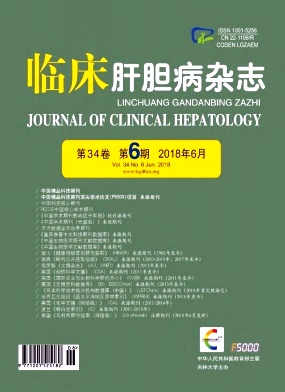|
[1]WANG G, LIN Y, HOU XF, et al.Discussion on influence factors, mechanism and traditional Chinese medicine pathogenesis of idiosyncratic drug-induced liver injury[J].China J Chin Mater Med, 2017, 42 (16) :3036-3043.
|
|
[2]DALAL K, HOLDBROOK T, PEIKI S.Ayurvedic drug induced liver injury[J].World J Hepatol, 2017, 9 (31) :1205-1209.
|
|
[3]HU Q, LIU W, SHAO H.Research progress of pharmacotherapy drug-induced liver injury[J].Chin J Clin Pharmacol Ther, 2016, 21 (2) :231-236. (in Chinese) 胡琴, 刘维, 邵宏.药物性肝损伤的药物治疗研究进展[J].中国临床药理学与治疗学, 2016, 21 (2) :231-236.
|
|
[4]REGEV A.How to avoid being surprised by hepatotoxicity at the final stages of drug develo-pment and approval[J].Clin Liver Dis, 2013, 17 (4) :749-767.
|
|
[5]Drug-induced Liver Disease Study Group, Chinese Society of Hepatology, Chinese Medical Association.Guidelines for the management of drug-induced liver injury[J].J Clin Hepatol, 2015, 31 (11) :1752-1769. (in Chinese) 中华医学会肝病学分会药物性肝病学组.药物性肝损伤诊治指南[J].临床肝胆病杂志, 2015, 31 (11) :1752-1769.
|
|
[6]CHALASANI P, HAYASH H, BONKOVSKY L, et al.ACG Clinical Guideline:the diagnosis and management of idiosyncratic drug-induced liver injury[J].Am J Gastroenterol, 2014, 109 (7) :950-966.
|
|
[7]GIORDANO C, RIVAS J, ZERVOS X.An update on treatment of drug-induced liver injury[J].Clin Transl Hepatol, 2014, 2 (2) :74-79.
|
|
[8]LI L, JIANG W.Clinical analysis of 275 cases of acute drug-induced liver disease[J].Front Med China, 2007, 1 (1) :58-61.
|
|
[9]HALLER C, DYER J, KO R, et al.Making a diagnosis of herbal-related toxic hepatitis[J].West J Med, 2002, 176 (1) :39-44.
|
|
[10]GOODMAN Z.Phenotypes and pathology of drug-induced liver disease[J].Clin Liver Dis, 2017, 21 (1) :89-101.
|
|
[11]SHAO C, WU C, LI J, et al.Clinical characteristics analysis of122 patients with drug induced liver injury[J].Chin Hepatol, 2012, 17 (9) :451-453.
|
|
[12]JI CH, ZHANG ZQ, WANG XY, et al.Clinical features of elderly patients with drug-induced liver injury[J].J Clin Hepatol, 2017, 33 (3) :502-506. (in Chinese) 姬琛华, 张竹青, 王晓媛, 等.老年药物性肝损伤患者临床特征分析[J].临床肝胆病杂志, 2017, 33 (3) :502-506.
|
|
[13]CHALASANI N, BONKOVSKY H, FONTANA R, et al.Features and outcomes of 899 pat-ients with drug-induced liver injury:the DILIN prospective study[J].Gastroenterology, 2015, 148 (7) :1340-1352.
|
|
[14]LEE W.Drug-induced hepatotoxicity[J].N Engl J Med, 1995, 333 (17) :1118-1127.
|
|
[15]LIU LN, ZHAO JX, CHEN WT.et al.Prognostic factors in 138patients with drug-induced liver injury[J].J Pract Hepatol, 2015, 18 (2) :160-163. (in Chinese) 刘丽娜, 赵建学, 陆玮婷, 等.138例药物性肝损伤患者影响预后的因素分析[J].实用肝脏病杂志, 2015, 18 (2) :160-163.
|
|
[16]SCHROEDER MJ, HOFFMAN AC.Electronic cigarettes and nicotine clinical pharmacology[J].Tobacco Control, 2014, 23 (Suppl2) :ii30-ii35.
|
|
[17]XU LH, ZHANG L, CHEN W, et al.Clinical features and the prognosis of acute drug-induced liver injury[J].J Pract Med, 2013, 29 (3) :3668-3671. (in Chinese) 徐丽红, 张蕾, 陈卫刚, 等.急性药物性肝损伤临床特点及预后分析[J].实用医学杂志, 2013, 29 (3) :3668-3671.
|
|
[18]LATIEF M, DAR W, SOFI N, et al.Novel risk factors and early detection of anti tubercular treatment induced liver injury-looking beyond American Thoracic Society Guidelines[J].Indian J Tuberc, 2017, 64 (1) :26-32.
|









 本站查看
本站查看




 DownLoad:
DownLoad: